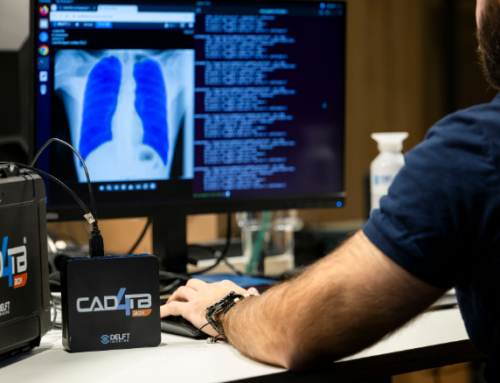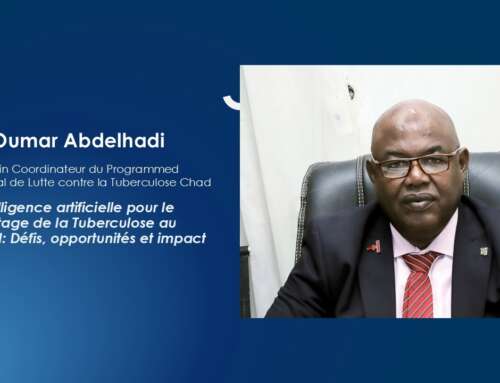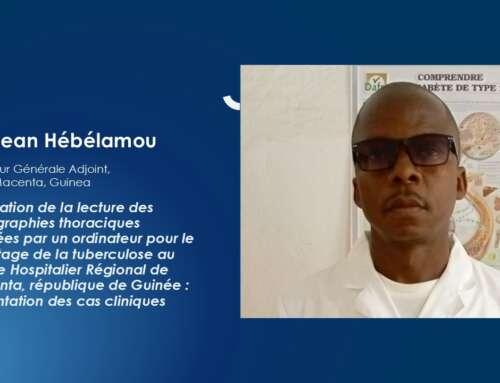Delivering timely healthcare interventions can be especially challenging in regions affected by instability and limited infrastructure. During a recent Delft Imaging webinar titled “From Crisis to Care: Implementing TB Screening Programs in Challenging Operating Environments,” Dr. Saïdou Gnanou, Medical Specialist in Public Health and National Tuberculosis Program (NTP) Coordinator for Burkina Faso, shared critical insights into the country’s strategy for active tuberculosis (TB) case finding using mobile digital radiography and artificial intelligence (AI).
Strengthening TB case detection amid security challenges
Burkina Faso’s National TB Program operates across 115 Diagnostic and Treatment Centers (CDTs), supported by 70 hospital laboratories and one national reference lab. Despite this network, escalating security concerns have hindered outreach to remote and high-risk populations.
Dr. Gnanou noted, “Our biggest challenge is the security crisis, which significantly impacts tuberculosis control efforts. Given the situation in certain insecure areas, we need to develop strategies to ensure that all individuals with tuberculosis in these zones can be screened.”
To overcome these constraints, Burkina Faso launched a national active case finding (ACF) strategy. This began with a study trip to Kenya involving multiple stakeholders, followed by a national situation analysis, strategy development, and phased implementation starting in 2019.
Leveraging mobile digital X-rays and AI for screening
Recognizing the limitations of facility-based screening, the NTP integrated mobile digital X-ray units into its TB control strategy. “Since 2024, the X-ray units acquired in 2023 have been actively used in various campaigns, including in certain healthcare facilities and even in specific detention centers that we target,” Dr. Gnanou explained. “We also conduct field campaigns with these mobile X-ray units to detect tuberculosis.” In 2024, CAD4TB was introduced to enhance image interpretation.
“Initially, when we started using these digital X-ray units, we did not have artificial intelligence (AI)… AI was partially introduced in 2024, as the AI equipment arrived that year,” said Dr. Gnanou. “While the use of AI in our mobile X-ray units hasn’t been for a very long period, we have observed positive results during the time it has been employed in our field campaigns.”
Evidence-based outcomes and diagnostic efficiency
Between September 2024 and April 2025, 1,730 individuals were screened, resulting in 61 TB case detections. CAD4TB detected 50 suspected cases, 37 of which were confirmed by both AI and pulmonologist interpretation. However, Dr. Gnanou pointed out critical diagnostic differences: “Out of 1,351 X-rays that the pulmonologist declared ‘normal,’ 8 confirmed tuberculosis cases were subsequently identified through laboratory tests.”
Conversely, “There were cases where the AI did not identify tuberculosis, but the pulmonologists did. Conversely, there were also instances where the AI identified potential tuberculosis cases (13 out of 50 AI-detected cases) that, upon pulmonologist interpretation and laboratory analysis, were found not to be tuberculosis.”
Such findings underscore the importance of combined AI and clinical expertise. “While there are instances where AI and pulmonologist interpretations differ, very often the results from both, along with laboratory findings, align,” he stated.
Expanding access and equity in TB diagnostics
The deployment of mobile radiography and AI has expanded access to TB diagnostics for underserved groups. “These mobile digital X-ray units became operational at the PNT in 2023,” said Dr. Gnanou, noting their impact across different screening environments, including prisons and IDP camps.
On pediatric TB, he added: “The use of mobile digital X-ray campaigns has allowed us to effectively screen high-risk target groups, including malnourished children and hospitalized pediatric patients.”
Operational Learnings and Future Calibration
While results are promising, operational hurdles remain. “Our AI’s score for detecting suspicious lesions is set at 60%. This calibration aims to improve the accuracy of our AI in identifying potential tuberculosis cases. We had planned further studies to evaluate this 60% threshold, but due to Global Fund-related activities, these have been postponed.”
Despite these challenges, the initiative reflects strong progress. Dr. Gnanou concluded, “Our radiographic campaigns for active tuberculosis case finding have made a significant contribution to case detection, particularly in recent years.”



